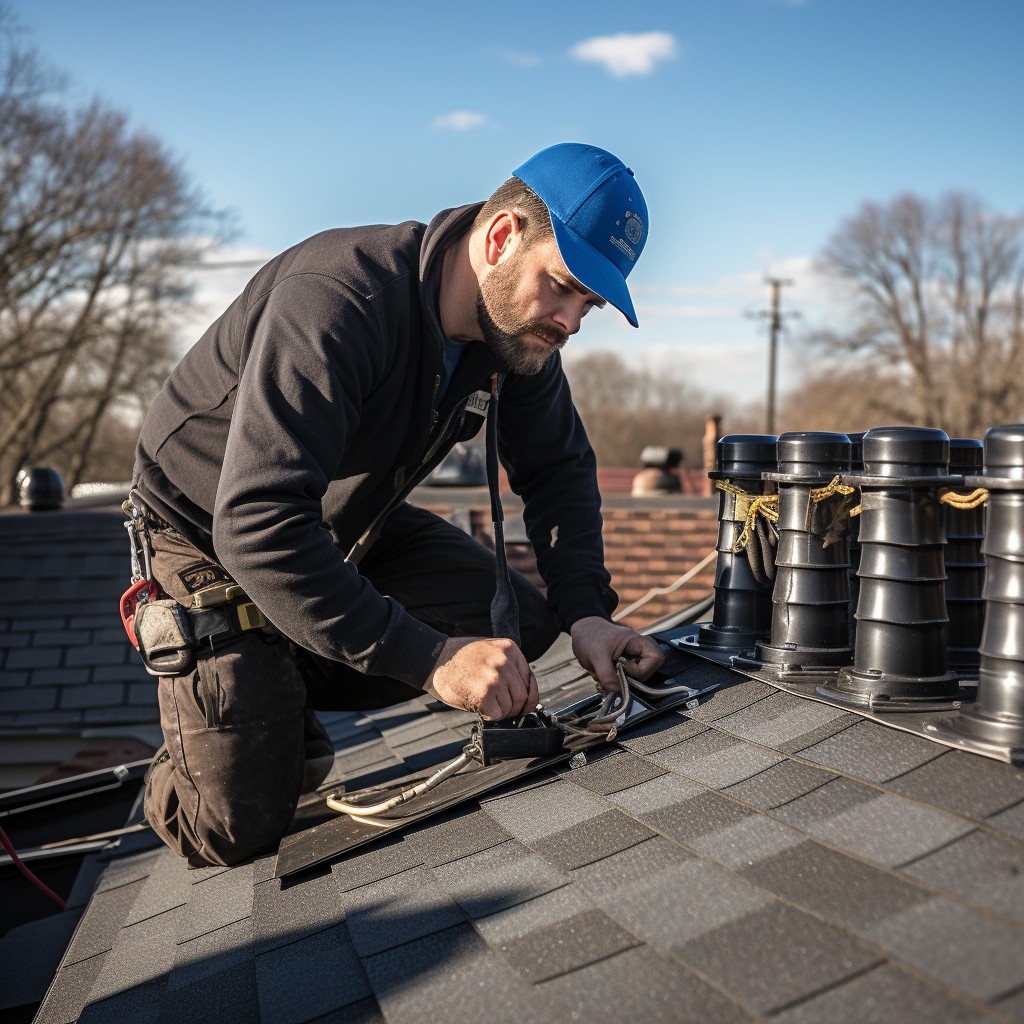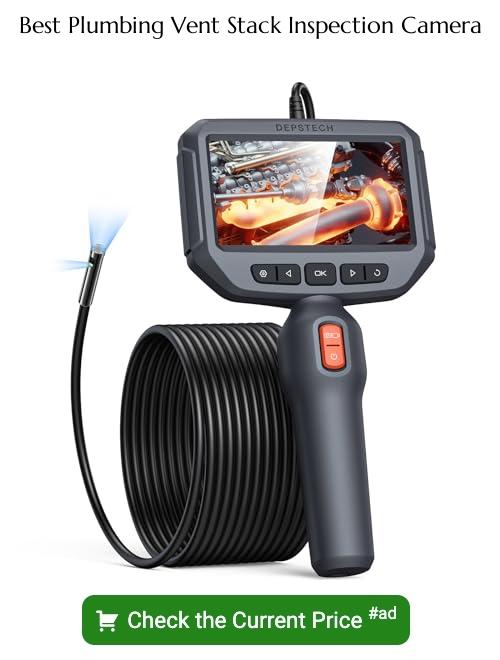Last updated on
Uncover the mystery of locating your home’s plumbing vent stack because knowing it can significantly ease your plumbing woes.
Locating the plumbing vent stack in your home can initially seem like a daunting task, but with a little guidance, it becomes a breeze. This vital component of your home’s plumbing system is typically easy to spot, as it’s a pipe that extends from the roof of your house. It’s often found directly above the main bathroom, as it serves to vent gases and maintain proper atmospheric pressure for the drains.
If you’re still unsure, you can follow the path of your home’s plumbing lines as they will lead you to the vent stack. For a more detailed step-by-step guide, keep reading to ensure you locate the plumbing vent stack correctly and safely.
Key takeaways:
- Plumbing vent stack is usually a pipe extending from the roof.
- It’s typically located above the main bathroom.
- Vent stack aids in venting gases and maintaining pressure for drains.
- Obstructions in vent stack can cause slow draining and foul smells.
- Regular maintenance helps prevent vent stack issues.
Table of Contents
Identification of Plumbing Vent Stack in Your House

Ideally located on the roof of your house, the plumbing vent stack serves as a sort of chimney for your plumbing system. Its primary purpose is to allow gases to escape, preventing them from seeping back into the house. Another important function is the equalization of pressure in the system, which aids in maintaining water movement.
Most residential homes possess at least one vent stack, though it’s also possible to find multiple, depending on the size and complexity of your plumbing system.
Identifying a vent stack is usually straightforward — it typically appears as a pipe extending upwards from your roof, standing a few feet tall. Often black or galvanized steel in color, though sometimes plastic, it’s usually 2 to 3 inches in diameter. You might also notice a protective cover or cap on top, designed to keep out leaves, rain, and critters.
Inside the house, the vent stack connects to your plumbing drain lines, following a downward course behind the walls. It eventually merges with your sewer line, which carries waste products out of the home to the city’s sewage system.
It’s important to note that not every pipe protruding from a roof is a vent stack, so visual identification may require a bit of due diligence. For example, an HVAC system also uses vent pipes, but these have different characteristics. Plumbing vent stacks don’t usually have any nearby external equipment, unlike HVAC vent pipes.
Steps to Discover Plumbing Vent Stack

To locate the plumbing vent stack, start by observing your roofline. You’ll generally find one or more pipes sticking out from there. Typically, they are located towards the middle of the roof, directly above the main bathroom.
Next, gently tap the walls surrounding your bathroom fixtures, listening for a hollow sound. This could indicate the presence of a pipe running within the wall. It’s essential to take note of these positions as plumbing vents often run vertically within walls.
If you’re still having trouble finding them, checking the building plans or blueprints can be helpful. They contain detailed layouts of your home, including the plumbing system.
Finally, consider accessing the attic or crawl space. A word of caution though, as this should only be attempted with proper safety equipment. Visibility may be poor and insulation material could be irritant. Here, you can follow larger pipelines that rise above the insulation material, heading towards the roof. These are most likely your home’s vent stacks.
Role of Plumbing Vent Stack in Home Infrastructure
Plumbing vent stacks serve a critical purpose in our residential infrastructure, even if their role often goes unnoticed. The first function is to eliminate sewage gases and odors, which directly channel into the outside atmosphere rather than infiltrating our homes. This is possible due to the vent stack’s wonderful principle of equilibrium, as fresh air funneled into the system helps balance the pressure and promote the free flow of water through the drain pipes.
The second fundamental task undertaken by a vent stack is breaking the vacuum potential that could impede a smooth wastewater flow. Imagine drinking a beverage through a straw – if the top end is blocked, the liquid ceases to move. The principle is the same for your plumbing system. By letting air into the pipes, the vent stack assures the path remains unblocked for seamless wastewater transition.
Remember, these are not single-use systems. Plumbing vent stacks run in networks around your house, each pipe playing its part to maintain sanitation and efficiency in the system. Understanding these crucial roles a vent stack plays might help recognize possible problems and address them promptly.
Detecting Common Issues With Plumbing Vent Stack
Several signs can hint at potential problems with your vent stack. Slow draining in sinks, tubs, or other fixtures may be an indication. You might also notice a foul smell emanating from your drains or even outside around the area where your stack exits your home.
Frequent backups, especially in lower level drains, are also a sign of vent stack issues as the vent’s role is to push air into the plumbing system to help water drain more smoothly. If water seems to gurgle or bubble up, it can suggest inadequate venting.
Moreover, hearing unusual noises from your plumbing system, such as gurgling sounds when flushing the toilet or running water, you may be dealing with a blocked or improperly installed vent stack.
Lastly, always consider the possibility of a vent stack problem when you see or smell sewer gases in your home. Inhalation of these gases can cause health problems and an immediate examination is suggested.
Remember, though these symptoms are common, they can also indicate other plumbing issues. Thus, a thorough investigation or professional inspection is highly recommended to pinpoint the exact problem.
Remedying Vent Stack Obstructions Successfully
Obstructions in a vent stack primarily occur due to blockages from leaves, nests, or even accumulated dirt. In such cases, the first step to remedy the situation is unclogging. A ladder and gloves would come in handy for this process. Ascending carefully, one should remove any visible blockages on top of the stack.
If the clog persists, a plumbing snake is highly effective. It’s a flexible rod that can slither through the vent stack, breaking and dislodging obstructions. Simply insert the coil, turn it slightly and withdraw, repeating the process to ensure thorough cleaning.
For resistant clogs, consider utilizing a garden hose. Attach it to the plumbing snake and slowly push it into the vent stack. The water can help break down stubborn blockages.
Remember, gloves and eye protection are always a necessity during this procedure to maintain safety standards. Logging the unclogging dates also helps in keeping track and administering preventative attention before any future obstructions occur. If issues persist, seeking professional help might be the smartest course of action.
Routine Maintenance Procedures for Plumbing Vent Stack
Regularly performing the following maintenance steps can help keep your vent stack functioning optimally and minimize potential plumbing issues:
1. Clear Debris: Routinely check the vent opening on the roof for leaves, nests, or other debris that can block airflow. Use a flashlight for a better view into the pipe. Remember, safety first. Consider hiring a professional if you’re not comfortable with heights.
2. Ice and Snow Removal: In colder climates, ice or snow can block vent stacks. Regular checks during winter months can prevent these obstructions.
3. Water Test: Pouring water down the vent stack can give you a sense of any issues. Slow draining water might indicate an obstruction.
4. Animal Screens: Installing a vent stack cover can prevent animals from entering and nesting. However, these must be checked regularly, as they can also be potential sites for debris build-up.
5. Inspection: An annual professional inspection can identify developing issues that may not be noticeable to the untrained eye.
Remember, if problems persist despite your maintenance efforts, it may indicate a more serious issue requiring professional intervention.
Knowing When to Call a Plumbing Professional
A keen awareness of potential complications is paramount to effectively manage your plumbing vent stack. The following signs often indicate a more intricate issue that warrants a professional’s attention:
1. Frequent Drain Blockages: While occasional toilet, sink or shower blockages might not be a concern, recurrent instances could indicate a vent stack problem, requiring expert intervention.
2. Foul Odors: A mixture of noxious gas smells wafting from drains could be a symptom of a vent stack obstruction. A skilled plumber possesses the tools and knowledge to address these concerns adequately.
3. Slow Drainage: If water seems to drain slower than usual, it could be symptomatic of a partial obstruction in the vent stack, necessitating professional assistance.
4. Unusual Noises: Gurgling or bubbling sounds emanating from drains often signify issues with the vent stack, and they shouldn’t be ignored.
In these instances, enlisting the aid of a certified plumber can save both time and potential damage costs. They have specialized training to rectify any major and minor concerns that may arise with your vent stack efficiently, ensuring a well-functioning plumbing system.
FAQ
How do I find my vent stack?
Your vent stack can be located on your roof line, appearing as a vertical pipe running through the roof.
What are telltale signs that the plumbing vent stack is blocked?
Visible signs of a blocked plumbing vent stack include slow-draining sinks, gurgling noises from drains, and a persistent sewage smell from drains or outside the house.
What basic tools are necessary to inspect the plumbing vent stack?
To inspect the plumbing vent stack, one requires a flashlight, ladder, hand gloves, protective eyewear, and a plumbing snake.
What potential problems might occur if a plumbing vent stack is not properly maintained?
A poorly maintained plumbing vent stack can lead to issues such as slow draining, frequent backups, foul smells, and potentially harmful sewer gas leaks into the home.





